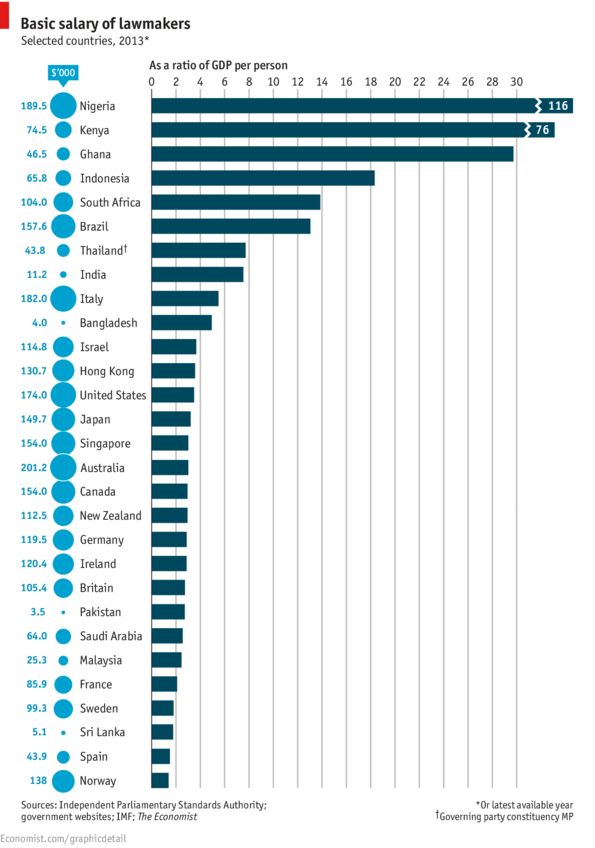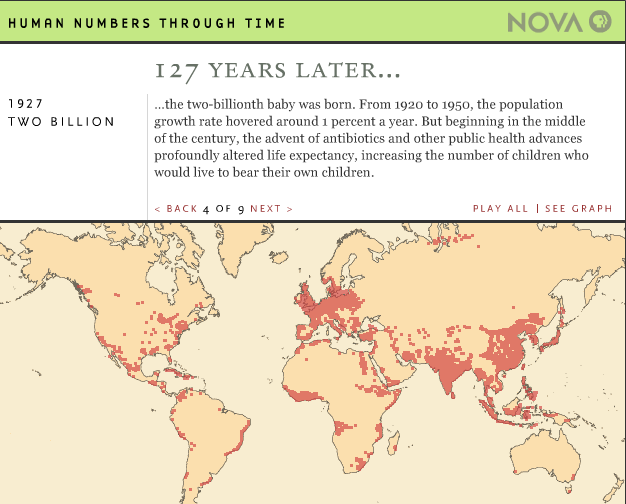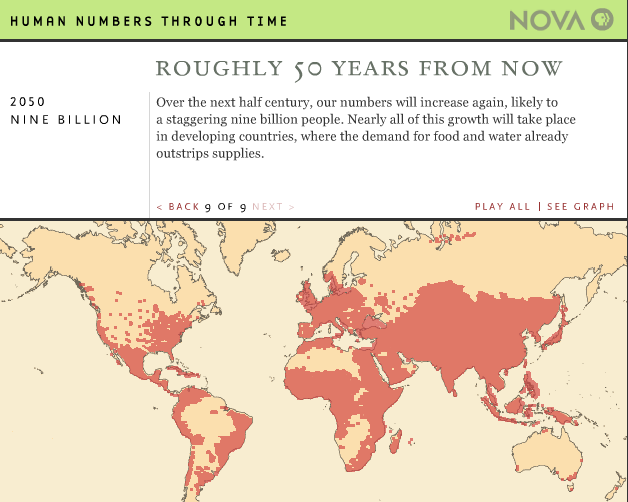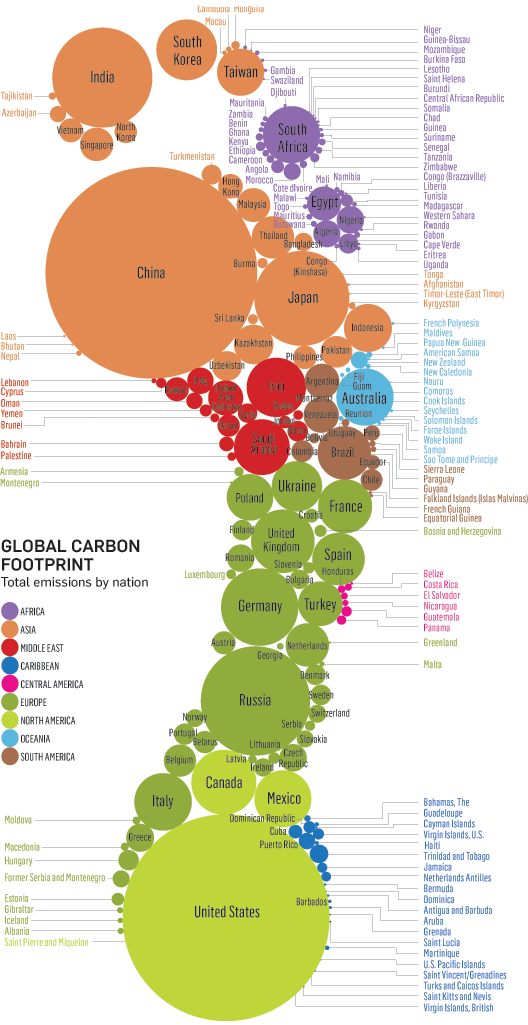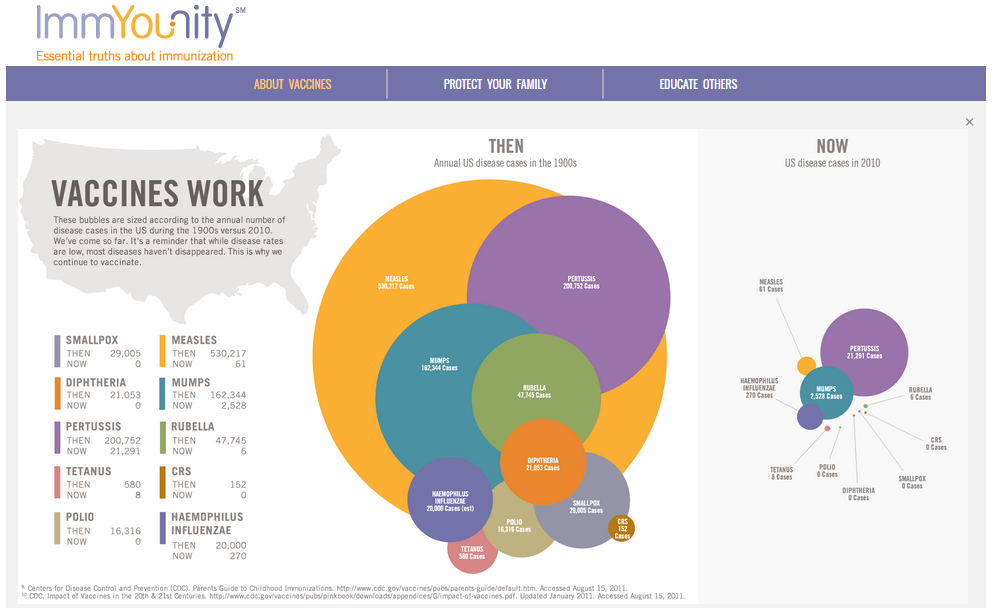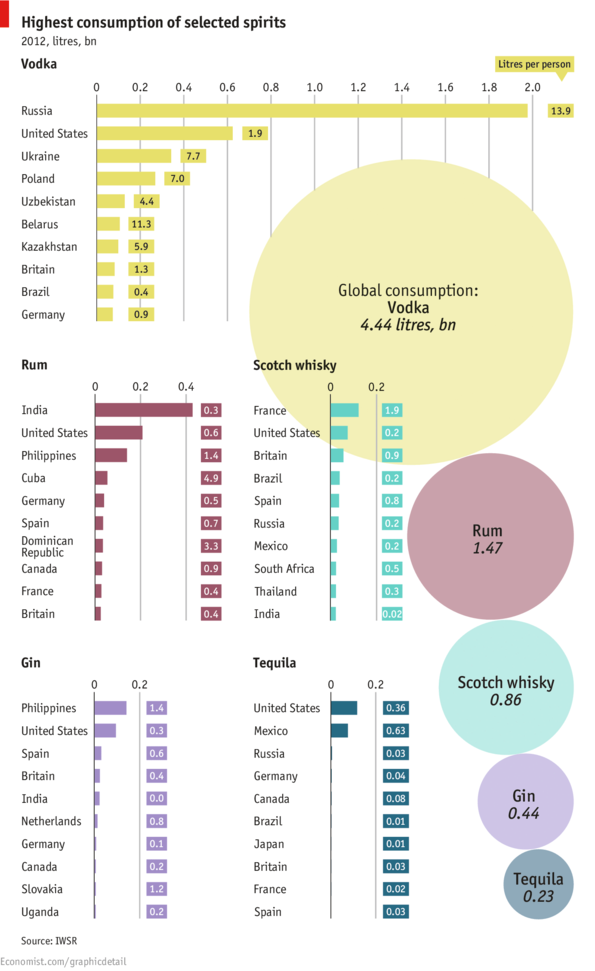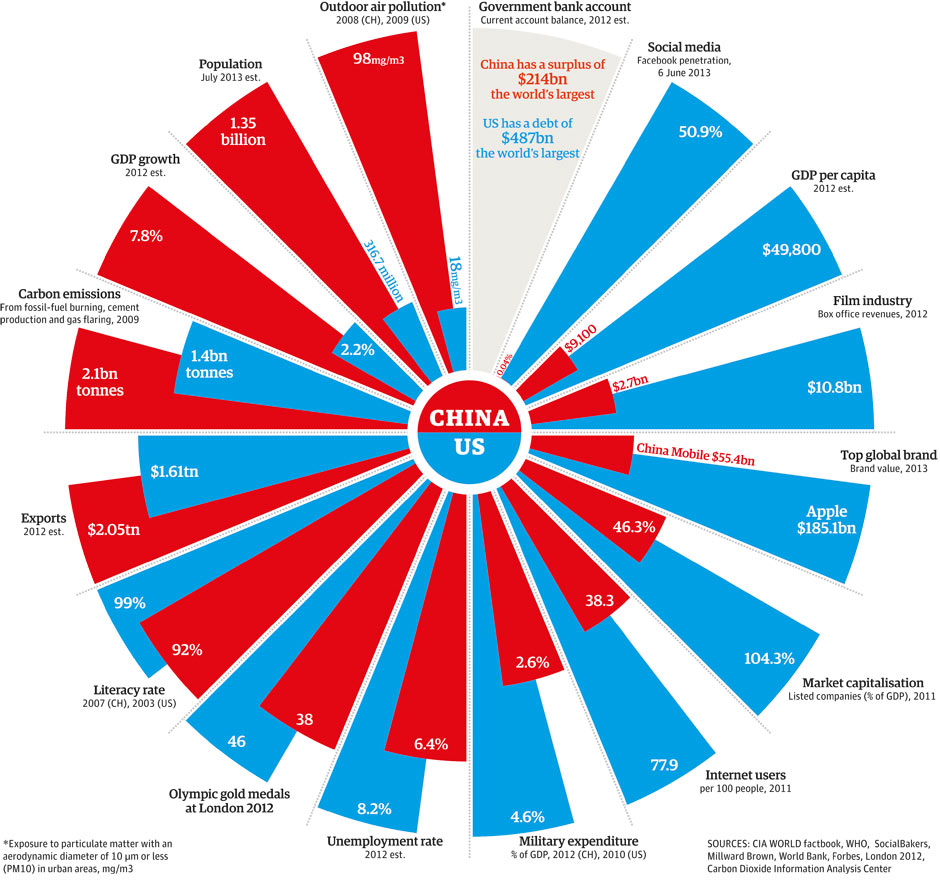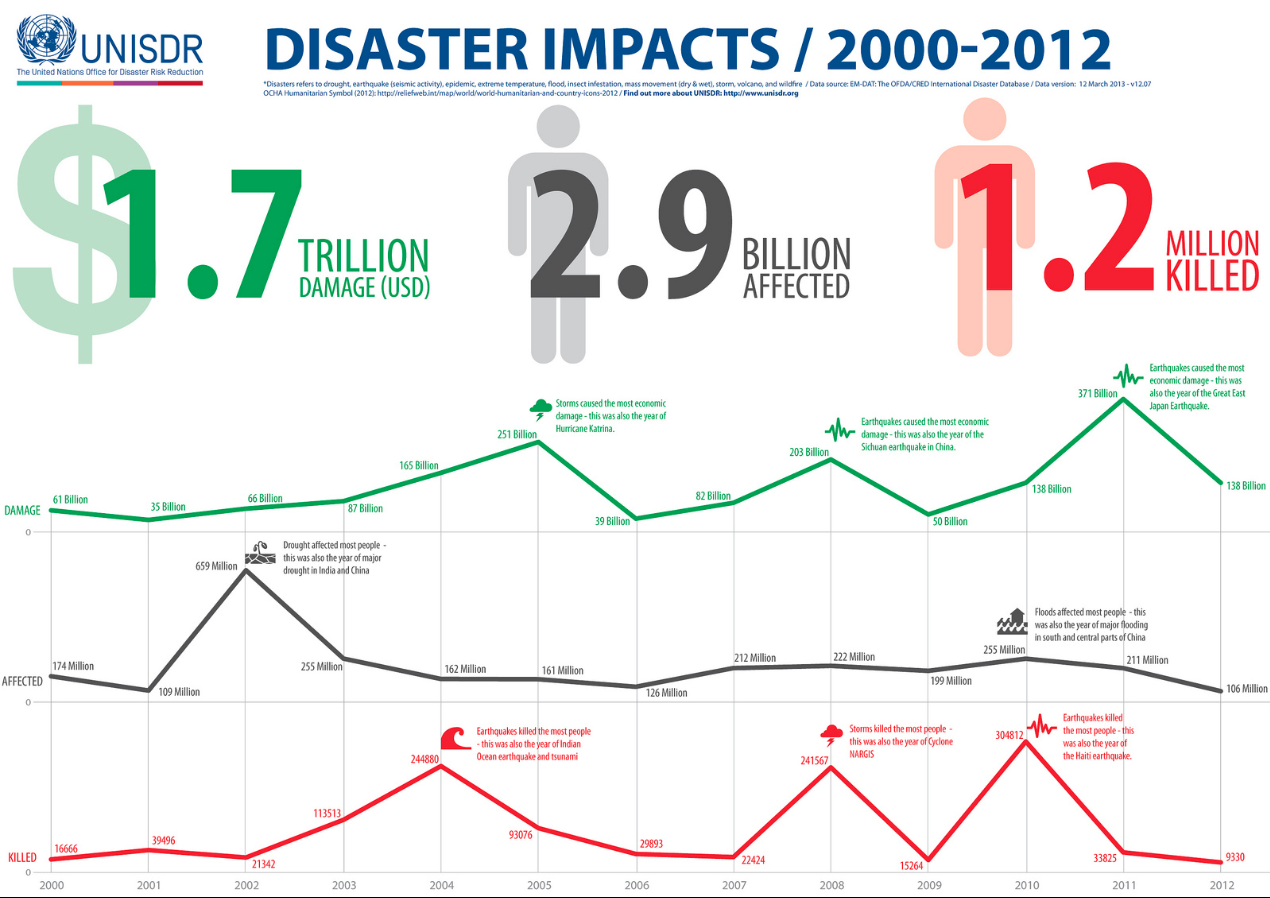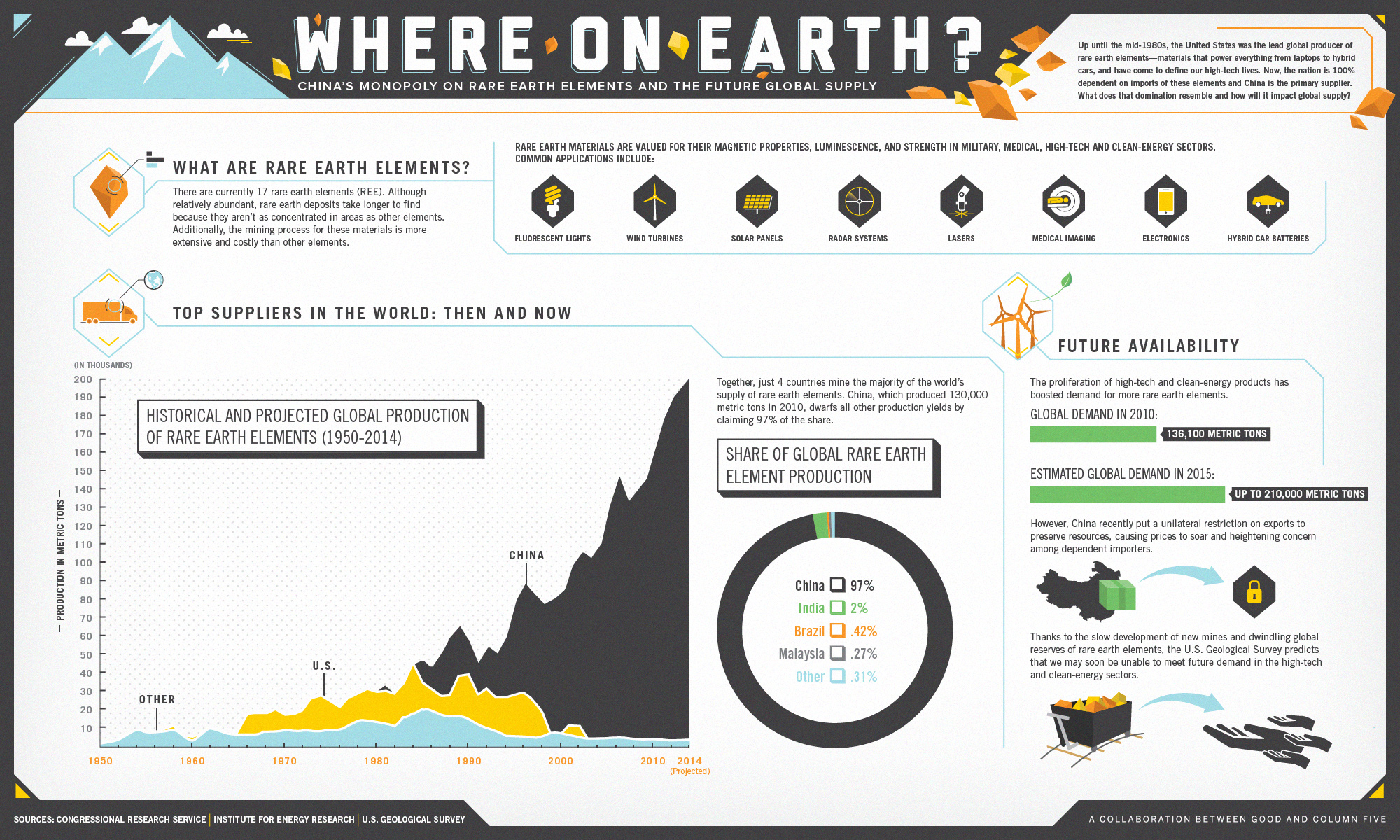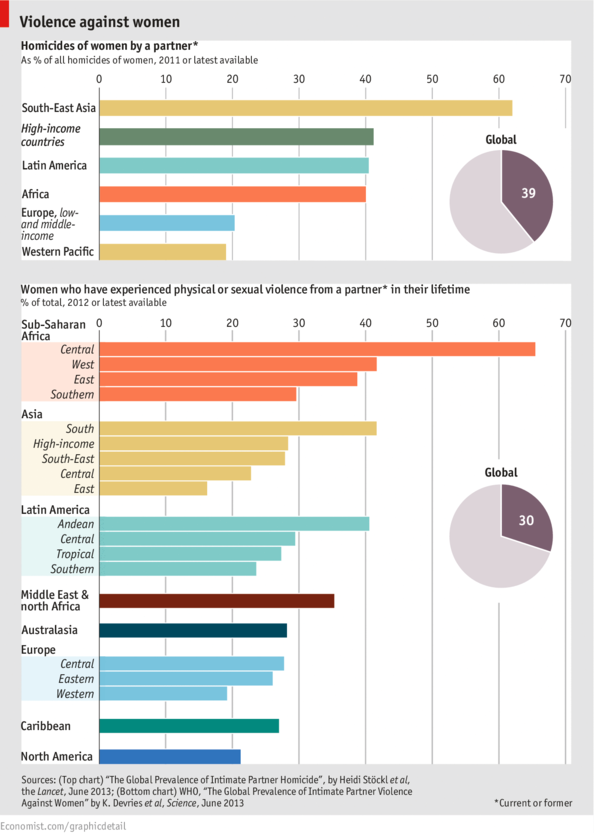 In this chart published by The Economist we look at two sets of data about violence against women.
In this chart published by The Economist we look at two sets of data about violence against women.
The first one shows that more than a third (39%) of homicides of women around the world are committed by a previous or current partner. The numbers are specially shocking for South East Asia (Cambodia, Laos, Myanmar [Burma], Thailand, Vietnam, Brunei, Malaysia, East Timor, Indonesia, Philippines, and Singapore). The numbers are also high for Latin American and African countries.
The second set of data shows that 30% of women around the world have experienced physical or sexual violence during their lifetime by a former or current partner. The numbers are the highest for Central African countries (Burundi, Central African Republic, Democratic Republic of the Congo, and Rwanda), followed by countries in West Africa (Benin, Burkina Faso, Ivory Coast, Ghana, Liberia, Nigeria, Senegal, Sierra Leone, etc.), South Asia (Afghanistan, Bangladesh, Bhutan, India, Maldives, Nepal, Pakistan, and Sri Lanka), the Andean region of South America (Colombia, Venezuela, Ecuador, Peru, and Bolivia), the Middle East, and North Africa.
 On average, U.S. mobile subscribers talk on the phone 356 minutes, or roughly 6 hours per month. That number is double that of the Turkey, and 4.5 times that of Germany. That estimate is the highest among selected OECD countries.
On average, U.S. mobile subscribers talk on the phone 356 minutes, or roughly 6 hours per month. That number is double that of the Turkey, and 4.5 times that of Germany. That estimate is the highest among selected OECD countries.